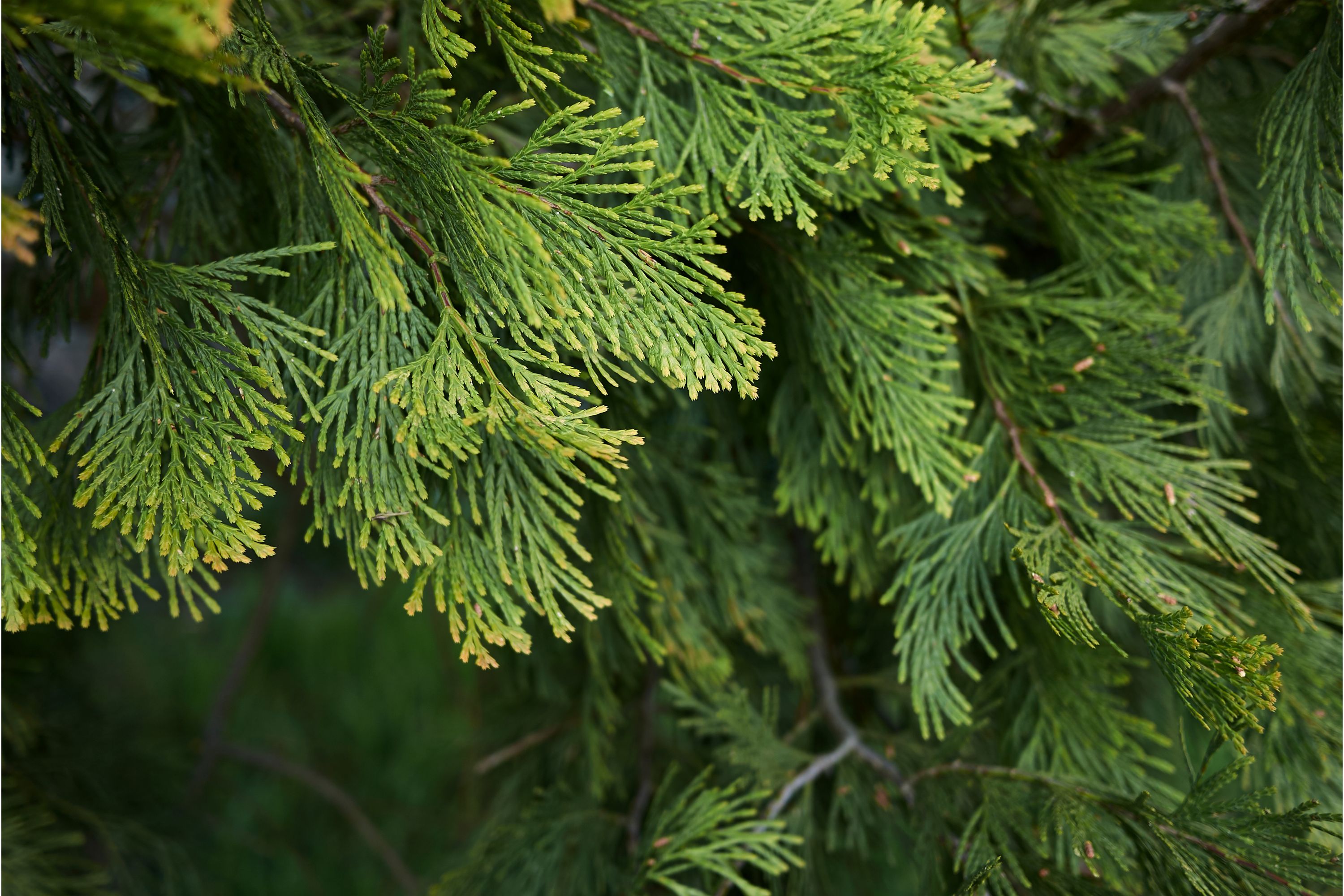Incense Cedar
(Calocedrus decurrens)

Description
Calocedrus decurrens, with the common names incense cedar and California incense-cedar (syn. Libocedrus decurrens Torr.), is a species of coniferous tree native to western North America. It is the most widely known species in the genus, and is often simply called 'incense cedar' without the regional qualifier. Calocedrus decurrens is a large tree, typically reaching heights of 40–60 m (130–195 ft) and a trunk diameter of up to 1.2 m (3.9 ft). The largest known tree, located in Klamath National Forest, Siskiyou County, California, is 157.42 ft (47.98 m) tall with a 472-inch (12.0-meter) circumference trunk and a 57.42-foot (17.50-meter) spread. It has a broad conic crown of spreading branches. The bark is orange-brown weathering grayish, smooth at first, becoming fissured and exfoliating in long strips on the lower trunk on old trees. The foliage is produced in flattened sprays with scale-like leaves 2–15 mm (3⁄32–19⁄32 in) long; they are arranged in opposite decussate pairs, with the successive pairs closely then distantly spaced, so forming apparent whorls of four; the facial pairs are flat, with the lateral pairs folded over their bases. The leaves are bright green on both sides of the shoots with only inconspicuous stomata. The foliage, when crushed, gives off an aroma somewhat akin to shoe-polish. The seed cones are 20–35 mm (3⁄4–1+3⁄8 in) long, pale green to yellow, with four (rarely six) scales arranged in opposite decussate pairs; the outer pair of scales each bears two winged seeds, the inner pair(s) usually being sterile and fused together in a flat plate. The cones turn orange to yellow-brown when mature about 8 months after pollination. The pollen cones are 6–8 mm (1⁄4–5⁄16 in) long. The bulk of the range is in the United States, from central western Oregon through most of California and the extreme west of Nevada, and also a short distance into northwest Mexico in northern Baja California. This tree is the preferred host of a wood wasp, Syntexis libocedrii a species which lays its eggs in the smoldering wood immediately after a forest fire. The tree is also host to incense-cedar mistletoe (Phoradendron libocedri), a parasitic plant which can often be found hanging from its branches. The incense cedar is one of the most fire and drought tolerant plants in California. Although the tree is killed by hot, stand-replacing crown fire, it spreads rapidly after lower intensity burns.
Taxonomic tree:







